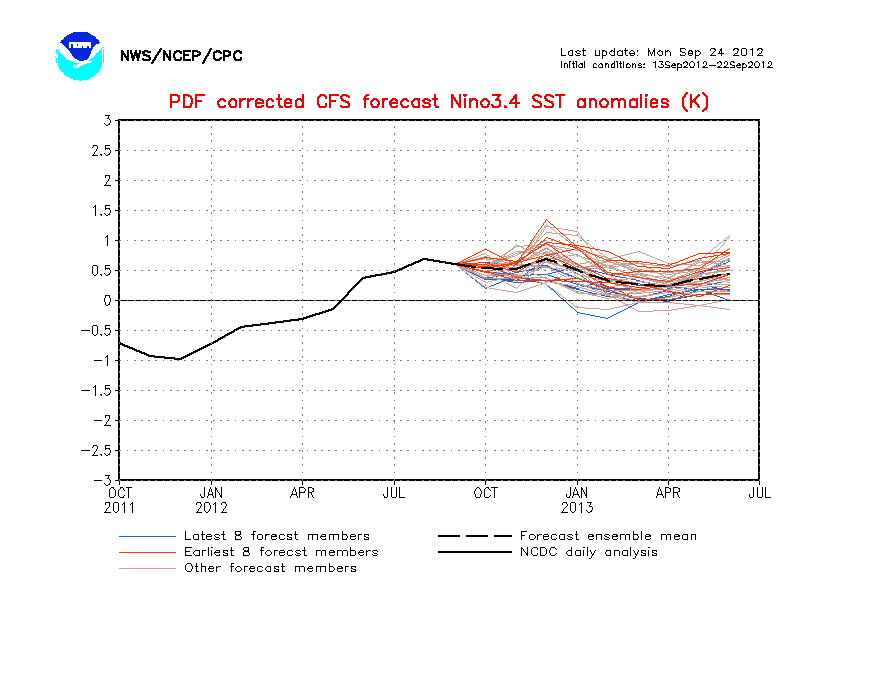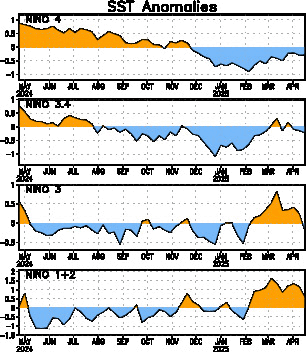http://www.longpaddock.qld.gov.au/seaso ... soivalues/

Moderator: S2k Moderators






KWT wrote:Yeah looks like its moderate, and moderate La Ninas tend to lead to surpressed numbers compared to what other background factors would prog (this year it'll probably be the difference between 14-16NS and 18-20NS...) with a greater threat south and west as we've already seen with Alex...




ABSTRACT
The effects of El Niño-Southern Oscillation on hurricane activity in the Atlantic Basin as a whole have been well established. It is known that El Niño suppresses hurricane activity while La Niña enhances it. Regional differences in the impact of El Niño/La Niña on hurricane landfalls have been observed in the Caribbean. The present study focuses on regional differences in the impact of ENSO on hurricane landfalls in the United States.
Hurricane landfall frequencies for Florida and the U.S. East Coast (Georgia to Maine) for El Niño, neutral, and La Niña years are presented. An increase compared to neutral years in Florida landfalling hurricanes for La Niña years is not observed; however, there are more hurricanes making landfall in Florida than along the East Coast during neutral years. Results for the Gulf Coast (Alabama through Texas) are nearly identical to those for Florida. La Niña appears to only increase hurricane landfall activity relative to neutral years from Georgia northward in the United States.
Most previous ENSO impact studies have shown differences in hurricane activity between El Niño , neutral, and La Niña phases. In this study, differences are only observed in one out of the three phases. Along the East Coast, the effects of the El Niño and neutral phases are essentially the same, such that the scenario becomes El Niño/neutral vs. La Niña. Along the coasts of the Gulf of Mexico and Florida, there is a similar scenario. In this case, the effects of the La Niña and neutral phases are nearly identical, creating a La Niña/neutral vs. El Niño scenario.
Examination of the origin points and tracks of landfalling hurricanes for both regions are examined and results show that storms making landfall along the East Coast are more likely to form in the central Atlantic while those that make landfall in Florida usually form further west, in the Caribbean and the Gulf of Mexico. Also, there are fewer storms forming in the neutral phase in the usual origin regions for East Coast landfalling hurricanes than there are in the cold phase. Possible explanations for the regional variation in the impact of ENSO on hurricane landfalls, such as the North Atlantic Oscillation and steering patterns, are suggested.









Still, it’s not that much data on which to make a definitive deduction. If the records in the graphic spanned (say) a 50 year period, I would be more confident in the assumption of La Niña seasons producing less cyclones than Neutral ones.cycloneye wrote:Until I saw this graphic a few weeks ago when Dr Jeff Masters posted it at Wunderground, I was always in the thinking that La Nina seasons were more active than Neutral ones because of the less shear La Nina causes. I guess not.

Still, it’s not that much data on which to make a definitive deduction. If the records in the graphic spanned (say) a 50 year period, I would be more confident in the assumption of La Niña seasons producing less cyclones than Neutral ones.

Not to mention that each category has a fairly significant outlier - especially the outlier of all outliers, 2005. Truthfully, just from that data, you can really only make an argument for a difference between El Nino and not El Nino, and even that's stretching things. I like that Dr. Masters had the thought to compare the three phases, but I wish he had done a more complete job of itabajan wrote:Still, it’s not that much data on which to make a definitive deduction. If the records in the graphic spanned (say) a 50 year period, I would be more confident in the assumption of La Niña seasons producing less cyclones than Neutral ones.cycloneye wrote:Until I saw this graphic a few weeks ago when Dr Jeff Masters posted it at Wunderground, I was always in the thinking that La Nina seasons were more active than Neutral ones because of the less shear La Nina causes. I guess not.
[img]http://www.wunderground.com/hurricane/2010/since1995_dean.jpg[img]
Users browsing this forum: Iceresistance, pepecool20 and 71 guests